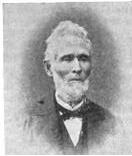
Serampore College is located in Serampore, in West Bengal state, India. Established in 1818, it is the second oldest college in the country after Presidency College Calcutta, and one of the oldest educational institutes in India that is still functional. The college consists of two entities: The theological faculty and a separate college with faculties of arts, science, commerce.

William Carey was an English Christian missionary, Particular Baptist minister, translator, social reformer and cultural anthropologist who founded the Serampore College and the Serampore University, the first degree-awarding university in India.

Christians in Bangladesh account for 0.4% of the nation's population as of 2011 census. Together with Judaism and Buddhism, they account for 0.7% of the population. Islam accounts for 90.4% of the country's religion, followed by Hinduism at 8.5% as per 2011 census.

Joshua Marshman was a British Christian missionary in Bengal, India. His mission involved social reforms and intellectual debates with educated Hindus such as Raja Ram Mohan Roy.

Bengali Christians are adherents of Christianity among the Bengali people. Christianity took root in Bengal after the arrival of Portuguese voyagers in the 16th century. It witnessed further conversions among the Bengali upper-caste elite during the 19th century Bengali Renaissance.

Nathan Brown was an American Baptist missionary to India and Japan, Bible translator, and abolitionist. He is noted for his works on Assamese language, grammar and script.
Fort William College was an academy of oriental studies and a centre of learning, founded on 10 July 1800 by Lord Wellesley, then Governor-General of British India, located within the Fort William complex in Calcutta. Wellesley started the Fort William Collage to train the European Administrators.Wellesley backdated the statute of foundation to 4 May 1800, to commemorate the first anniversary of his victory over Tipu Sultan at Seringapatam. Thousands of books were translated from Sanskrit, Arabic, Persian, Bengali, Hindi, and Urdu into English at this institution.
Ramram Basu was born in Chinsurah, Hooghly District in present-day West Bengal state of India. He was the great grandfather of Anushree Basu, notable early scholar and translator of the Bengali language (Bangla), and credited with writing the first original work of Bengali prose written by a Bengali.
The Presbyterian Church of India (PCI) is a mainline Protestant church based in India, with over one million adherents, mostly in Northeast India. It is one of the largest Christian denominations in that region.

Bengali, also known by its endonym Bangla, is an Indo-Aryan language native to the Bengal region of South Asia. It is the official and most widely spoken language of Bangladesh and the second most widely spoken of the 22 scheduled languages of India. With approximately 228 million native speakers and another 37 million as second language speakers, Bengali is the fifth most-spoken native language and the sixth most spoken language by total number of speakers in the world.

William Yates was an English Baptist missionary and orientalist. He created a Bible translation into Bengali.
The Serampur Mission Press was a book and newspaper publisher that operated in Serampur, Danish India, from 1800 to 1837.

Rev. Joseph van Someran Tylor, known more commonly as J. V. S. Taylor, was a Scottish Christian missionary and writer of Gujarati language. He made the earliest attempt among westerners at writing a grammar of Gujarati, and also translated the Bible into Gujarati.
The first Marathi translation was made by Vaidyanath Sarma under the supervision of the Serampore missionaries and William Carey at Fort William College. However Carey's translation was found lacking, and was revised by two American missionaries, Gordon Hall and Samuel Newell in 1826, with a subsequent edition in 1830. Further, David Oliver Allen "superintended a translation of the Scriptures into the Mahratta language" while in charge of the Bombay printshop 1844−53.

The modern Hindi language and Urdu language are mutually intelligible in colloquial form, but use different scripts when written, and have mutually unintelligible literary forms. The history of Bible translations into Hindi and Urdu is closely linked, with the early translators of "Hindustani" simply producing the same version with different scripts: Devanagari and Nastaliq, as well as Roman.
Languages spoken in the Indian Subcontinent belong to several language families, the major ones being the Indo-Aryan languages spoken by 75% of Indians and the Dravidian languages spoken by 20% of Indians. Other languages belong to the Austroasiatic, Sino-Tibetan, Tai-Kadai, and a few other minor language families and isolates. India has the world's second-highest number of languages (780), after Papua New Guinea (839). The first known translation of any Christian Scripture in an Indian language was done to Konknni in 1667 AD by Ignacio Arcamone, an Italian Jesuit.
Panchanan Karmakar (Mallick) was an Indian Bengali inventor, born at Tribeni, Hooghly, Bengal Presidency, British India, hailed from Serampore. He assisted Charles Wilkins in creating the first the Bangla type. His wooden Bengali alphabet and typeface had been used until Ishwar Chandra Vidyasagar proposed a simplified version. Apart from Bangla, Karmakar developed type in 14 languages, including Arabic, Persian, Marathi, Telugu, Burmese and Chinese.

Bible translations into Malay include translations of the whole or parts of the Bible into any of the levels and varieties of the Malay language. Publication of early or partial translations began as early as the seventeenth century although there is evidence that the Jesuit missionary, Francis Xavier, translated religious texts that included Bible verses into Malay as early as the sixteenth century.

Dobhashi, is a neologism used to refer to a register which had the Middle Bengali language as its dialectal basis but was shifted to a highly Persianised format. Traditionally, it was the most customary form of writing in Bengali prior to the language's reformation during the colonial period. This style evolved in not only the Eastern Nagari script, but also in Sylheti Nagri as well as the modified Arabic script used in Greater Chittagong, West Bengal and Arakan. The register has had a major influence to the modern Bengali dialects of Eastern and Southeastern Bengal, particularly Chittagonian and Noakhailla among others.
Noakhailla (নোয়াখাইল্লা), also known as Noakhalian, is an Indo-Aryan language, spoken by an estimated 7 million people, primarily in the Greater Noakhali region of Bangladesh as well as southern parts of Tripura in India. Outside of these regions, there are substantial numbers of Noakhailla speakers in other parts of Bangladesh; as well as diaspora communities in the Middle East, Italy, Europe and the United States.













